-
Car Reviews
- Car News
-
Car Comparisons
Latest comparisons
- Chasing Deals
On the surface, Volvo’s latest SUV is fully electric, luxurious and affordable for the masses but is actually worth buying?
Volvo has been pushing hard and fast towards an all-electric future, globally by 2030 and Australia fast-tracking the local lineup to all-electric, it promises, by 2026.
The latest to fill the EV ranks is the EX30 small SUV, one built squarely to a budget and yet offering fresh looks, a respectable range, and great performance. While smaller, it squarely targets Tesla’s Model Y. And after a day behind the wheel of this littlest Volvo, Elon should be feeling a bit nervous because this is far and away the better car.
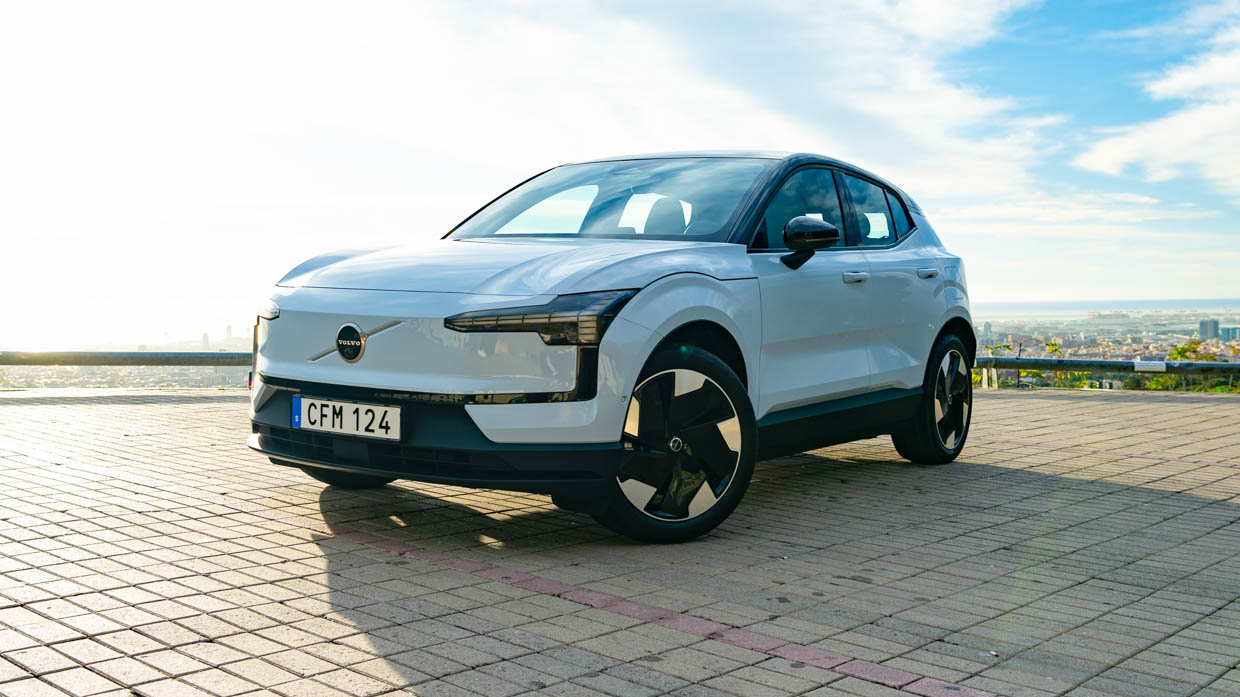
In Australia, the base single-motor EX30 starts from AU$59,990 list – Cupra Born money – while the highest-grade dual-motor tops out at AU$69,990 before on-roads, or right on the Tesla Model Y’s doorstep.
Our first drive, however, is of the lower-spec US market variant, the Single Motor Extended Range rear-drive Core, that starts from the equivalent of AU$51,377.
That’s a hell of a deal, considering the North American XC40 Recharge Core starts at what converts to AU$80,000 in the US.
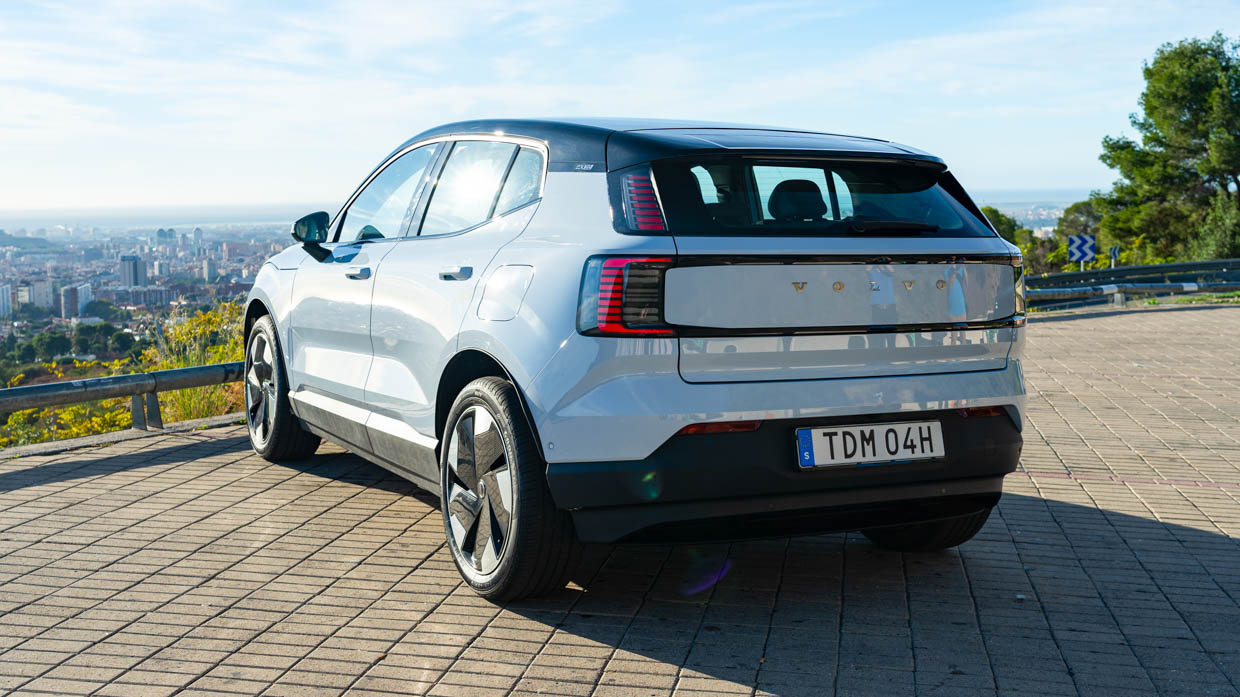
Those wanting more luxury can move up to the Plus, which adds niceties like a panoramic glass roof, a better sound system, and dual-zone climate control. Starting price is roughly AU$57,000 on the American market.
Finally, there’s the Ultra trim, which adds some other bits and pieces you might have expected on a lower trim in a Volvo, such as power seats. The biggest add-on here is Volvo’s Pilot Assist advanced driver assistance system plus a 360-degree camera. The starting price here is just under AU$60,000 on the American market…and is offered in Australia for AU$64,990.
The dual-motor follows the same structure but drops the Core, so the entry price there is AU$60,000 for the Plus trim on the American market. A dual-motor Ultra starts at roughly AU$2,000 higher…or, as mentioned, AU$69,990 in real terms for the Australian version.
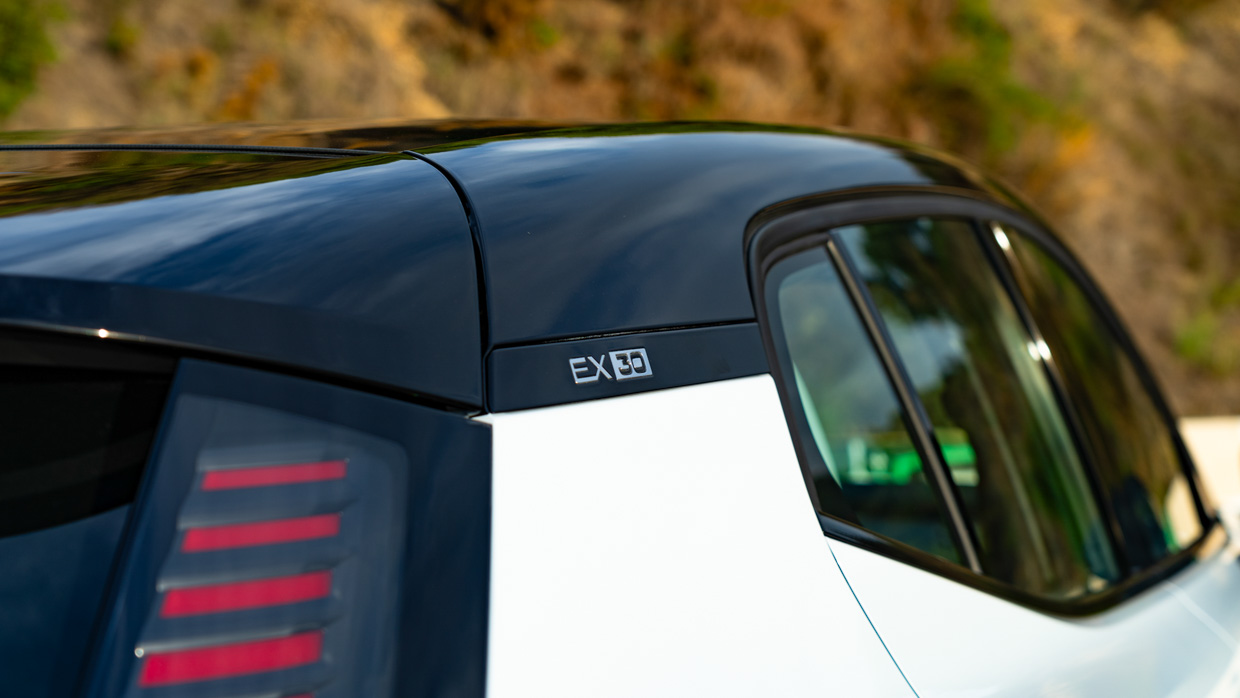
The US Twin Motor Performance adds all-wheel drive compared to the single-motor’s rear-driven nature, but it also brings a lot more power to the table: 315kW and 543Nm compared to the single-motor’s 200kW and 343Nm.
These outputs are mirrored in AU spec, which fit 68kWh batteries across the lineup.
And despite all that power, the range doesn’t decrease much. The single-motor EX30 will do an estimated maximum of 476km on the WLTP test cycle, while the dual-motor drops to 450. Australian versions are estimated at 480km and 460km respectively.
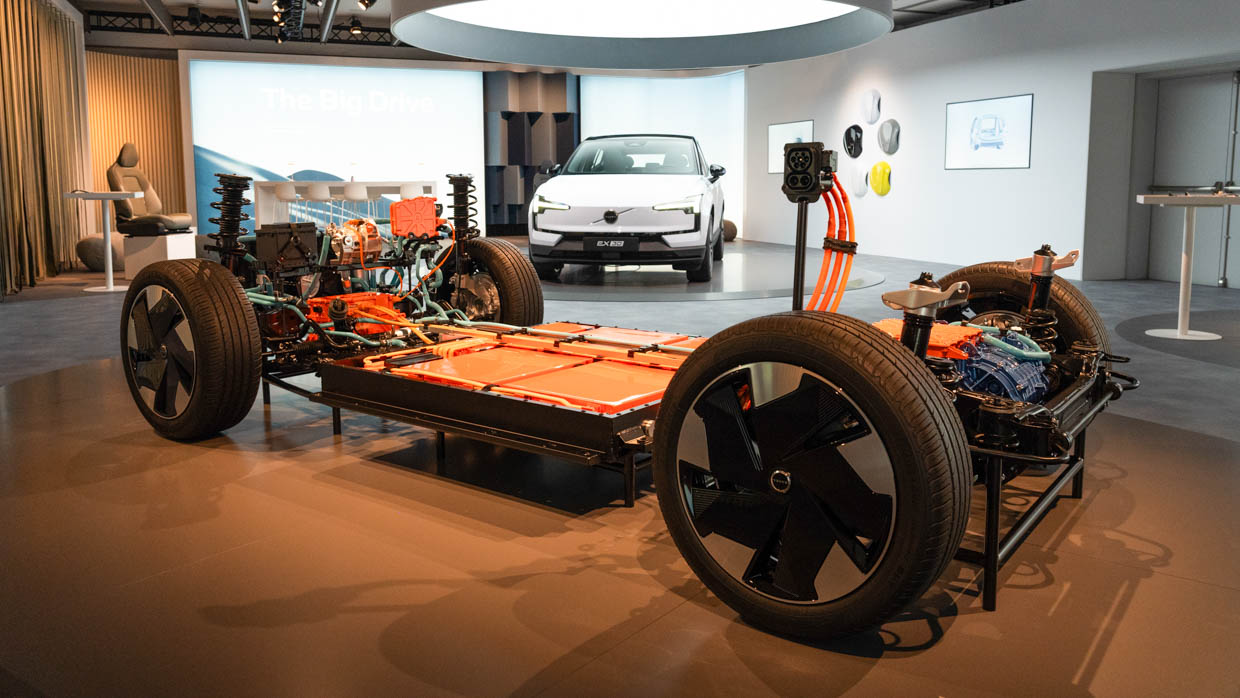
I wasn’t sure how that would translate onto the road. While the XC40 Recharge and its coupe-like SUV sibling, the C40 Recharge, are fast and fun, with a smaller footprint, a budget-minded design and Chinese assembly, this new little Volvo could have felt like something completely different.
I needn’t have worried, though, because, despite its attainable pricing, the EX30 exudes the same calm and confident driving character of its electric stablemates.
The doors still shut with reassuring solidity, controls are well positioned and ergonomically sound, and as soon as you engage drive, you’ll know that a lot of time was spent making this thing feel good on road.
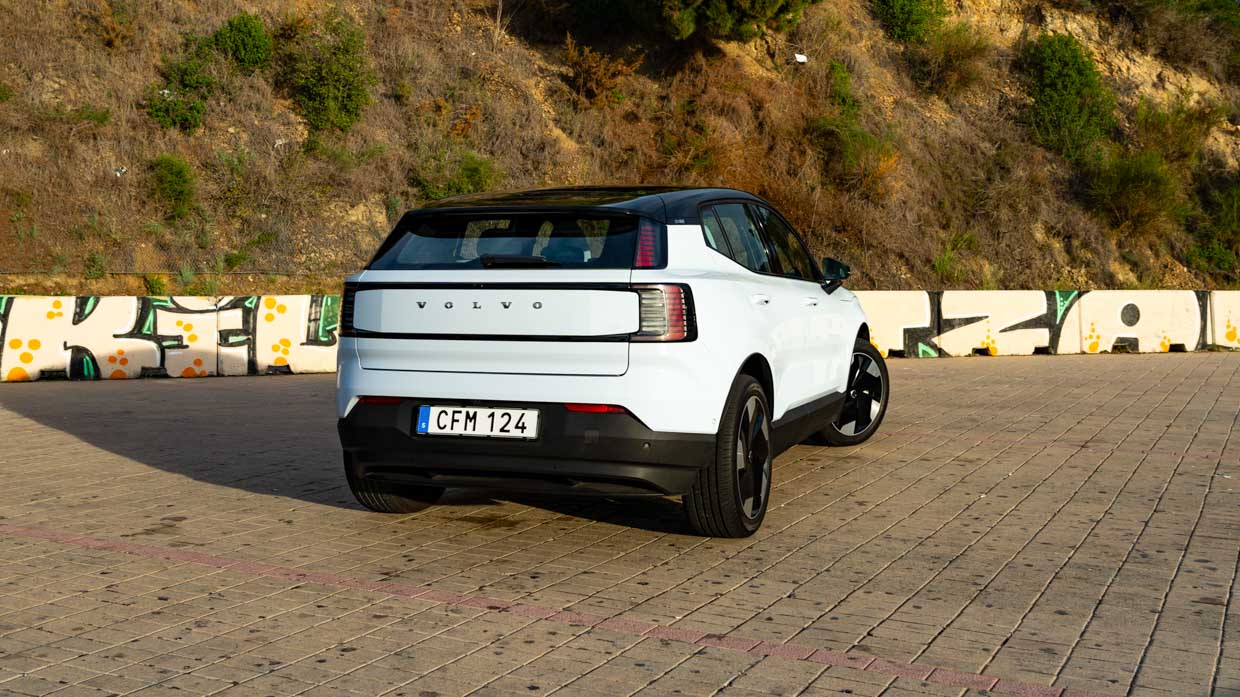
I spent plenty of time in both the single- and dual-motor models, and despite the abundance of power in the latter, around town, the two feel quite similar. The throttle curve of both is tuned with such subtlety that you really need to go deep on the throttle to get a rise out of either, which is ideal for urban commuting. .
The single-motor, rear-drive version has plenty of torque and responsiveness to be fun in and around town, though even at higher speeds on twisty roads, it doesn’t really disappoint. However, when you get up to highway speeds, though, the single-motor starts to fall a bit flat.
That’s not the case with the dual-motor format. Again, the way the throttle curve is tuned, you’ll need a lot of throttle to truly wake it up but, once awoken, it’s a demon. It surges forward with far more aggression than even the larger, 20-inch wheels fitted on the car I drove could manage.
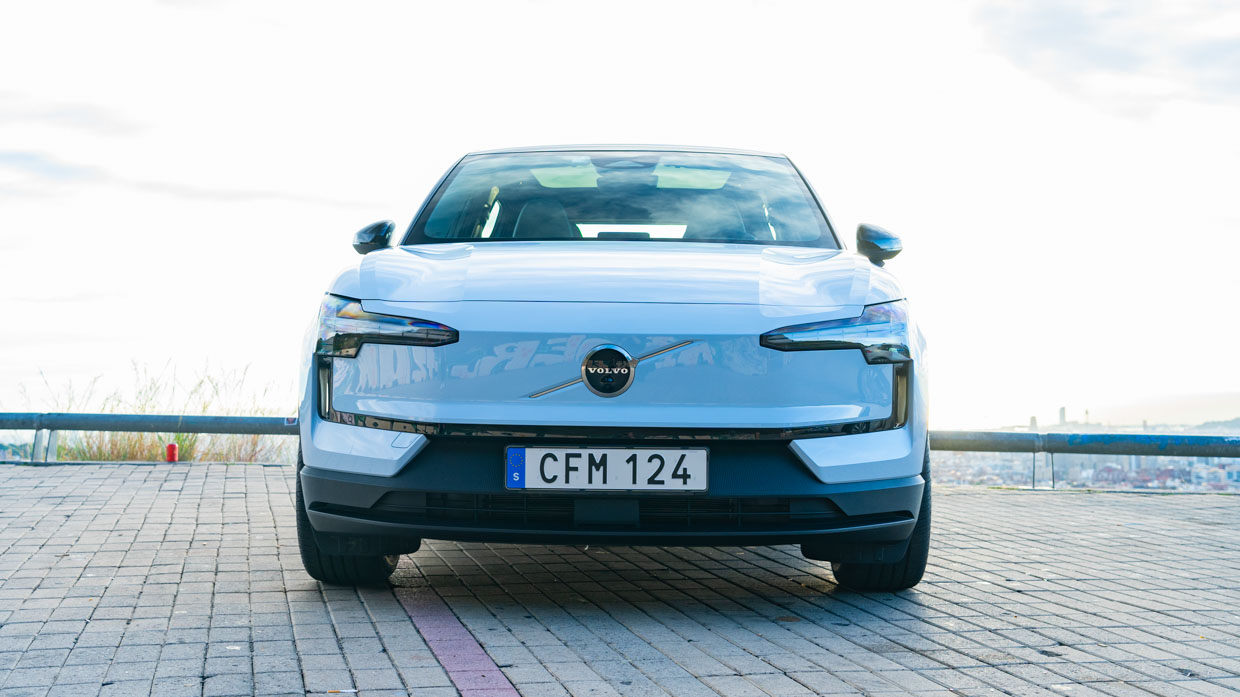
Handling, though, is generally relaxed. Even on the shorter sidewalls provided by those larger tyres, the ride quality is smooth and glossy. Further, the EX30’s steering is sharp and precise but it’s also light.
That combined with the generally soft tune to the suspension means there’s little incentive to push through the corners.
When it comes to design, sustainability was a huge focus for Volvo, particularly on the inside of the EX30. Economic execution, though, was perhaps the greater priority. Everything inside the EX30 is simple to an extreme, such that were it done with less skill, it would come off as seeming cheap.
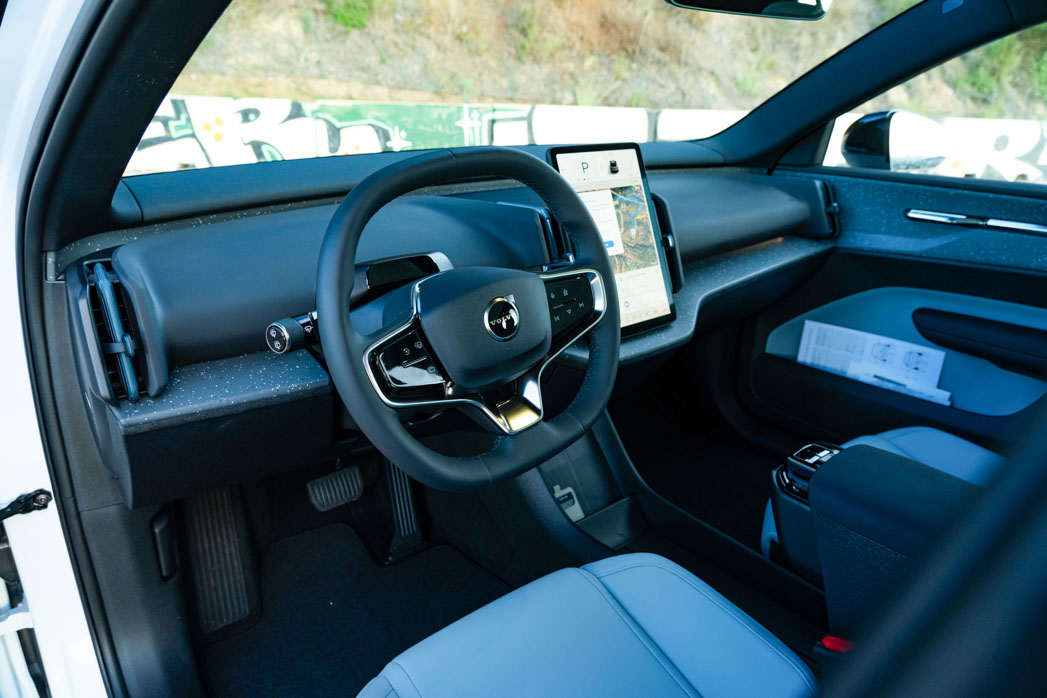
Instead, Volvo threads the needle between fiscally frugal and fantastic by bringing many of those recycled materials to the fore, such as an expanse of black plastic with white speckles that form the dash. Another interior dash material looks like pinstripes and has a wonderful texture to touch.
The same continues on the upholstery. While the vinyl on the lower trims – that Volvo calls Nordico – feels a bit low-rent, the woven inserts give it a fresh look. On the higher trims, the wool upholstery is both delightful and renewable.
Another clever example of effective cost-cutting is using a soundbar at the base of the windshield. The result isn’t a world-class sound experience, but it’s on par with most mid-tier systems. Not running speakers in the front doors surely saves on costs.
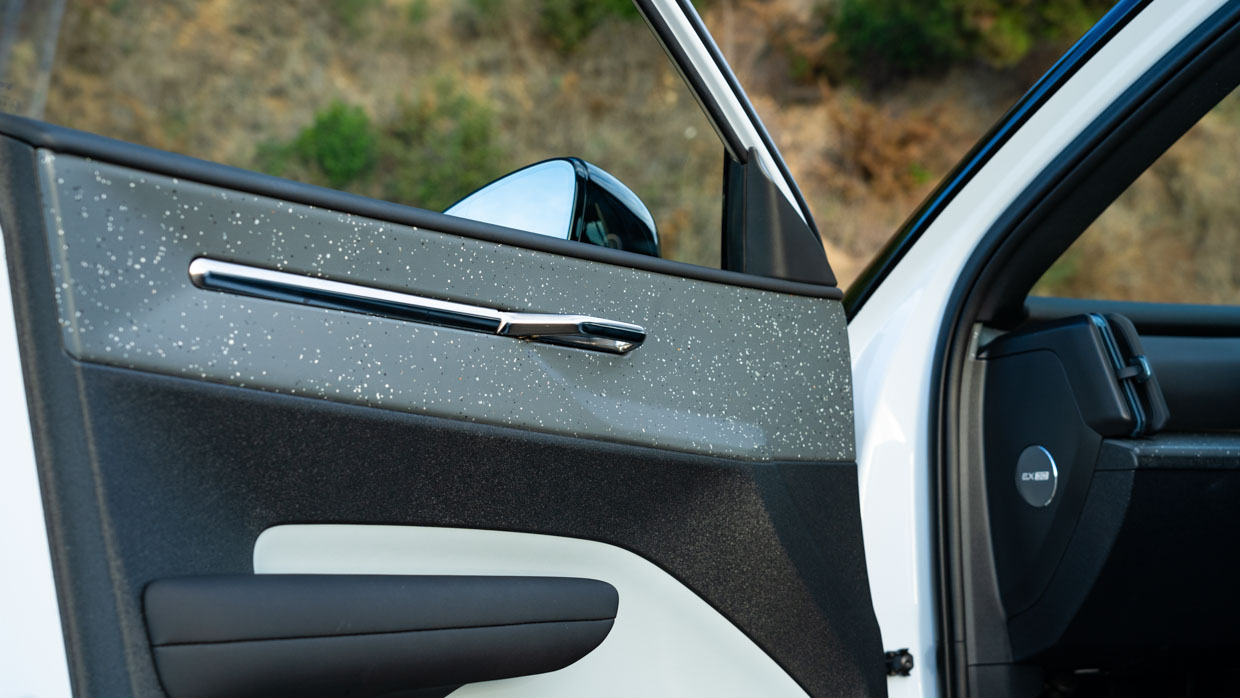
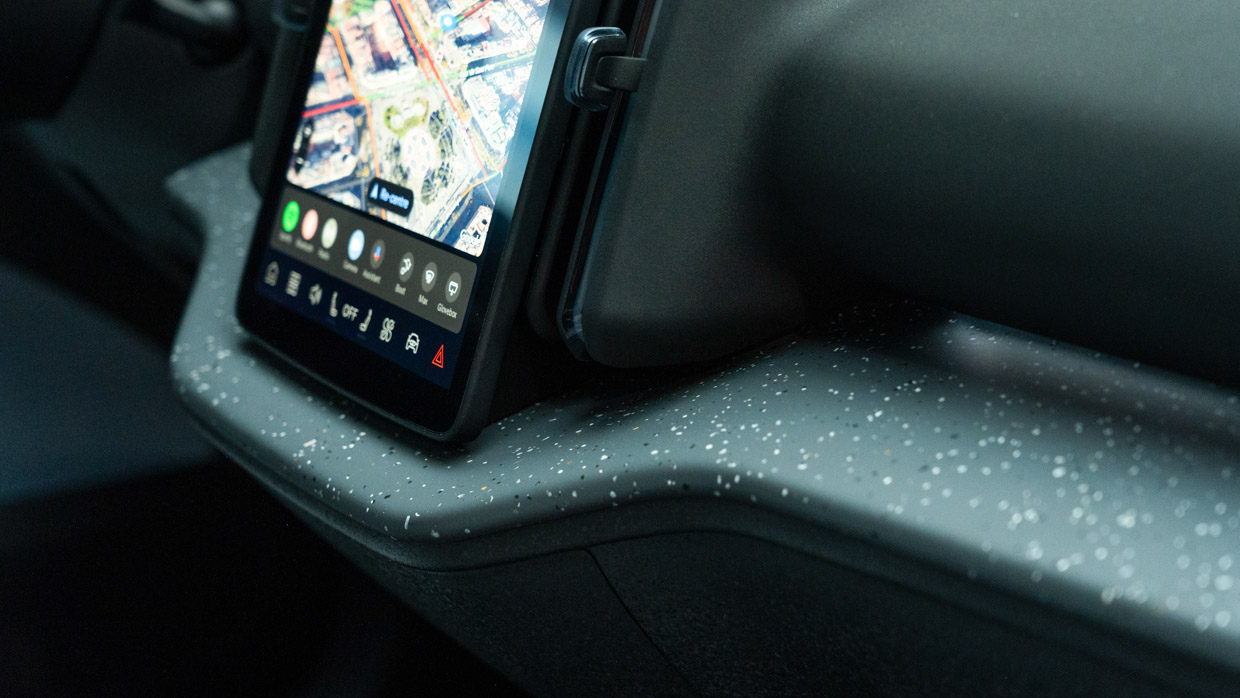
In fact, there isn’t much of any electronics in the doors at all. Window controls are centralised in the middle console, and Volvo, unfortunately, took a cue from the Volkswagen ID4 by just having two switches for four windows, with a toggle to switch between front and rear.
With a little practice, that shouldn’t be much of a bother, and rear-seat passengers do get their own controls, of course.
Speaking of the rear seat, you’ll find a surprising amount of headroom back there, but legroom is limited. That shouldn’t be a surprise given how short the EX30 is – it’s 4233mm – but it’s worth pointing out in case you had aspirations of hauling some long-legged folks regularly. The maximum boot size on Australian models is 318L, including 61L of underfloor storage.
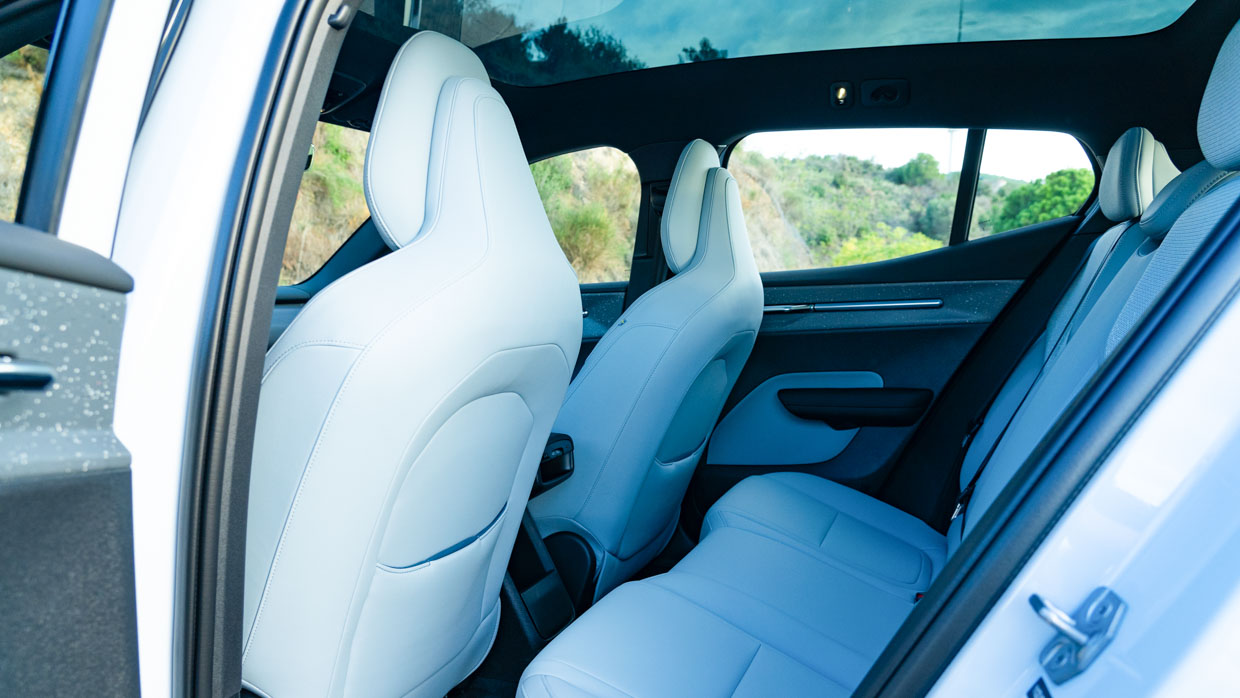
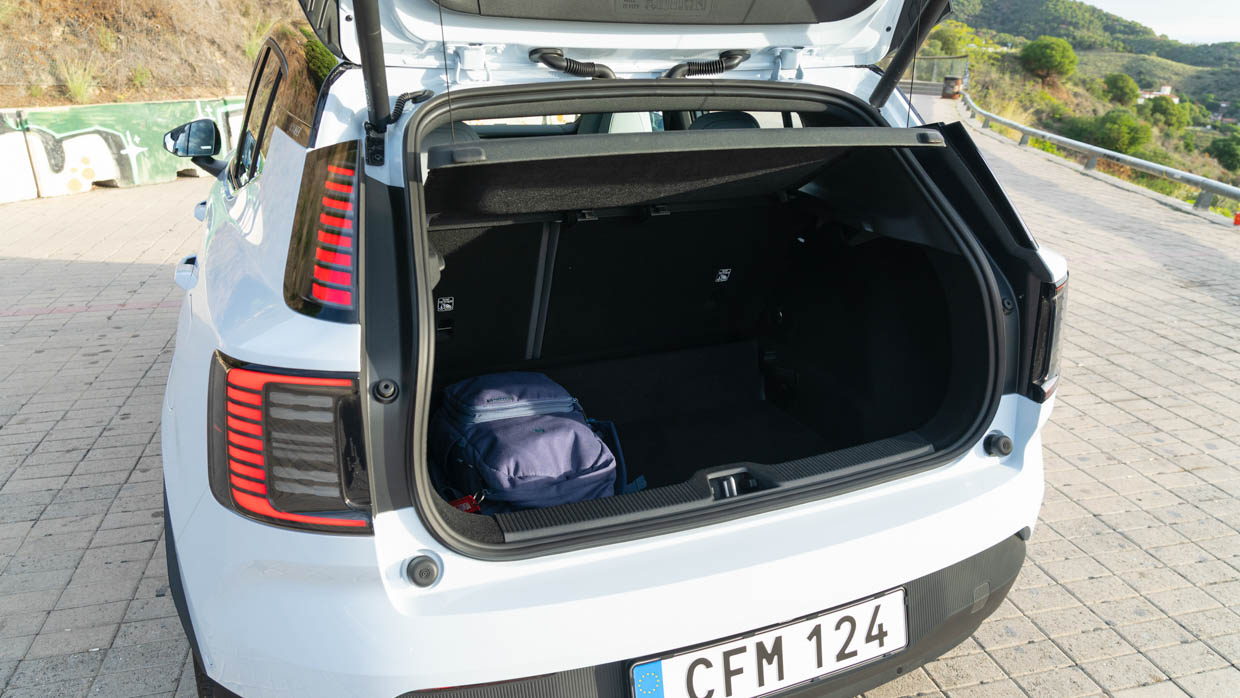
The car’s primary (and only) interface is a 12.3-inch, vertically oriented touchscreen. Like the Tesla Model 3, the EX30 does without a gauge cluster, so instrumentation is on the sole screen. A dedicated section up top shows crucial information like vehicle speed and adaptive safety information, while at the bottom, HVAC controls are always available.
In the middle is the meat in this Android Automotive sandwich. This software has a new look and feel to Volvo’s prior Android efforts, with quick access to all the functions and features you’ll need. The software in our test vehicles was unfinished, but even then, it worked well, making it a cinch to toggle the parking camera or dig into vehicle settings.
For those who prefer what their smartphone is serving up, Apple CarPlay is supported wirelessly, but sadly there’s no cable-less Android Auto yet.
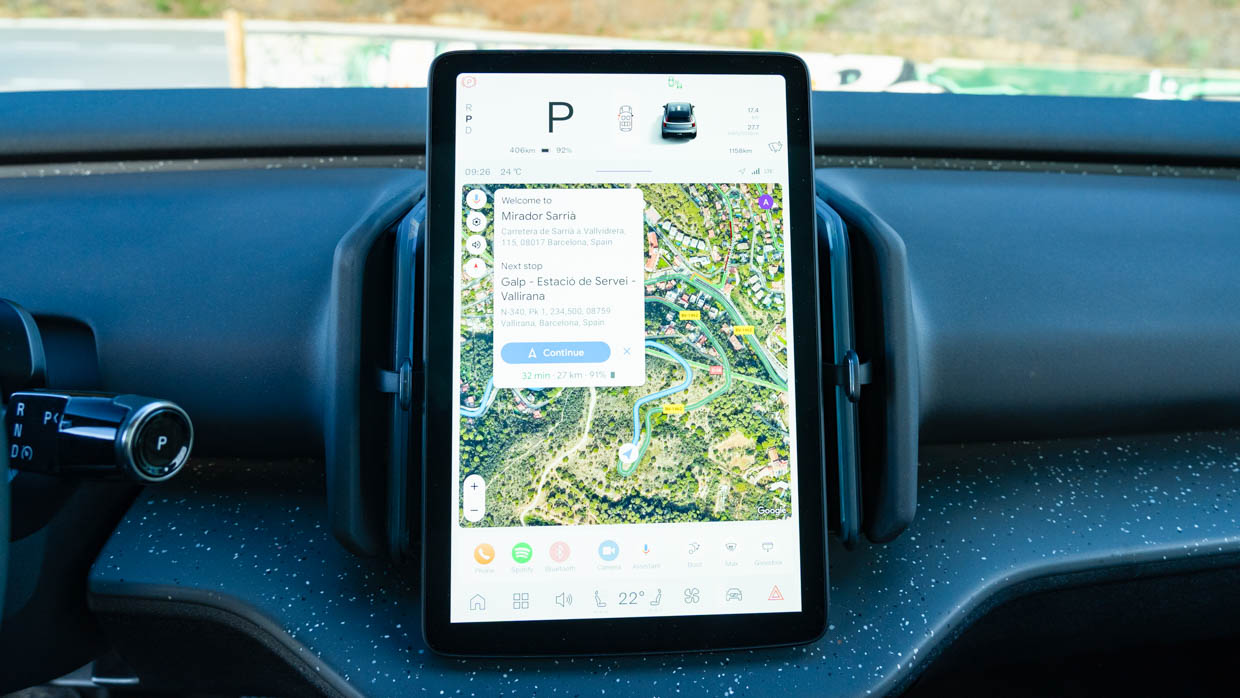
When it comes to safety, it’s a Volvo, but even with one of the world’s most secure brands, there are varying degrees of fitout these days. A lot of that comes down to the active safety side of the equation.
As standard, the US-market EX30 features:
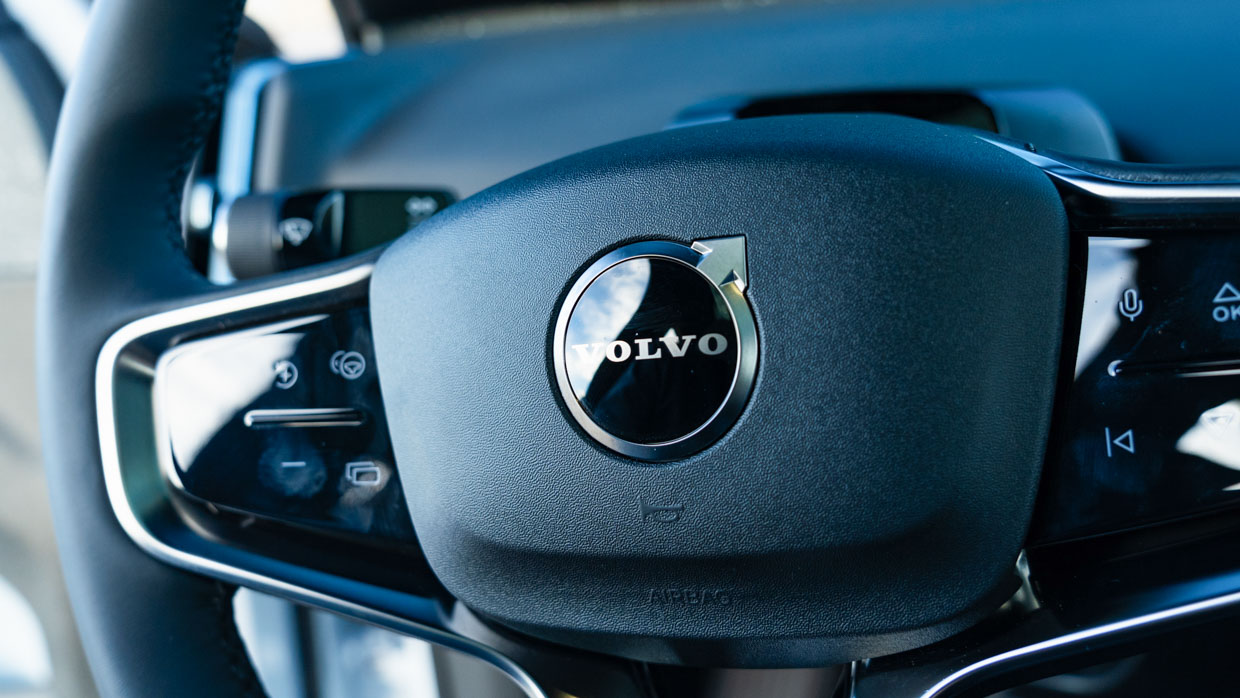
Step up to the Ultra, and you also get Volvo’s Pilot Assist system, with an advanced lane-keep system and adaptive cruise that automatically adjusts speed to match posted limits.
In my testing on rural and highway roads, our pre-production EX30 did a great job keeping itself centered within the lane, adjusting speed as appropriate, and even coming to a complete stop when needed. The production EX30 will also offer an assisted lane-change system that wasn’t enabled on our test car.
Despite being a car designed for frugality, the EX30 impressed me in my time behind the wheel. Whether it was the slower, more affordable rear-drive model or the barn-storming AWD flavor, the little SUV drove well and handled respectably.
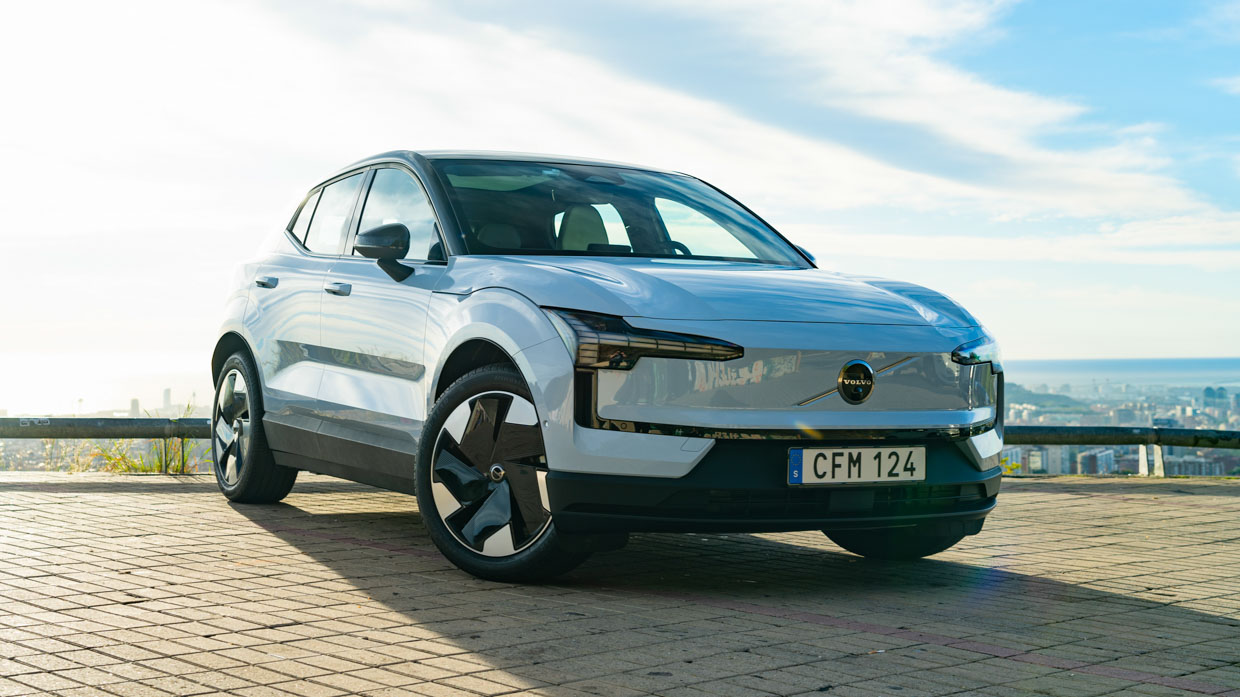
Most importantly, though, the EX30 always felt fresh and exciting. Whether it’s the crisp exterior styling or the novel interior setup, it’s a car that feels high-end and efficient at every step. It has a clear message and a strong personality that you just don’t often see in this category of vehicle.
Aussie customers will get to see for themselves when the EX30 launches in Australia around February 2024.
About Chasing cars
Chasing Cars reviews are 100% independent.
Because we are powered by Budget Direct Insurance, we don’t receive advertising or sales revenue from car manufacturers.
We’re truly independent – giving you Australia’s best car reviews.
The estimate provided does not take into account your personal circumstances but is intended to give a general indication of the cost of insurance, in order to obtain a complete quote, please visit www.budgetdirect.com.au. Estimate includes 15%^ online discount.
^Conditions Apply
Budget Direct Insurance arranged by Auto & General Services Pty Ltd ACN 003 617 909(AGS) AFSL 241 411, for and on behalf of the insurer, Auto & General Insurance Company Limited(ABN 42 111 586 353, AFSL 285 571).Because we don’t know your financial needs, we can’t advise you if this insurance will suit you. You should consider your needs and the Product Disclosure Statement before making a decision to buy insurance. Terms and conditions apply.
Indicative quote based on assumptions including postcode , 40 year old male with no offences, licence suspensions or claims in the last 5 years, a NCD Rating 1 and no younger drivers listed. White car, driven up to 10,000kms a year, unfinanced, with no modifications, factory options and/or non-standard accessories, private use only and garaged at night.
^Online Discounts Terms & Conditions
1. Discounts apply to the premium paid for a new Budget Direct Gold Comprehensive Car Insurance, Third Party Property Only or Third Party Property, Fire & Theft Insurance policy initiated online on or after 29 March 2017. Discounts do not apply to optional Roadside Assistance.
2. Discounts do not apply to any renewal offer of insurance.
3. Discounts only apply to the insurance portion of the premium. Discounts are applied before government charges, taxes, levies and fees, including instalment processing fees (as applicable). The full extent of discounts may therefore be impacted.
4. We reserve the right to change the offer without notice.